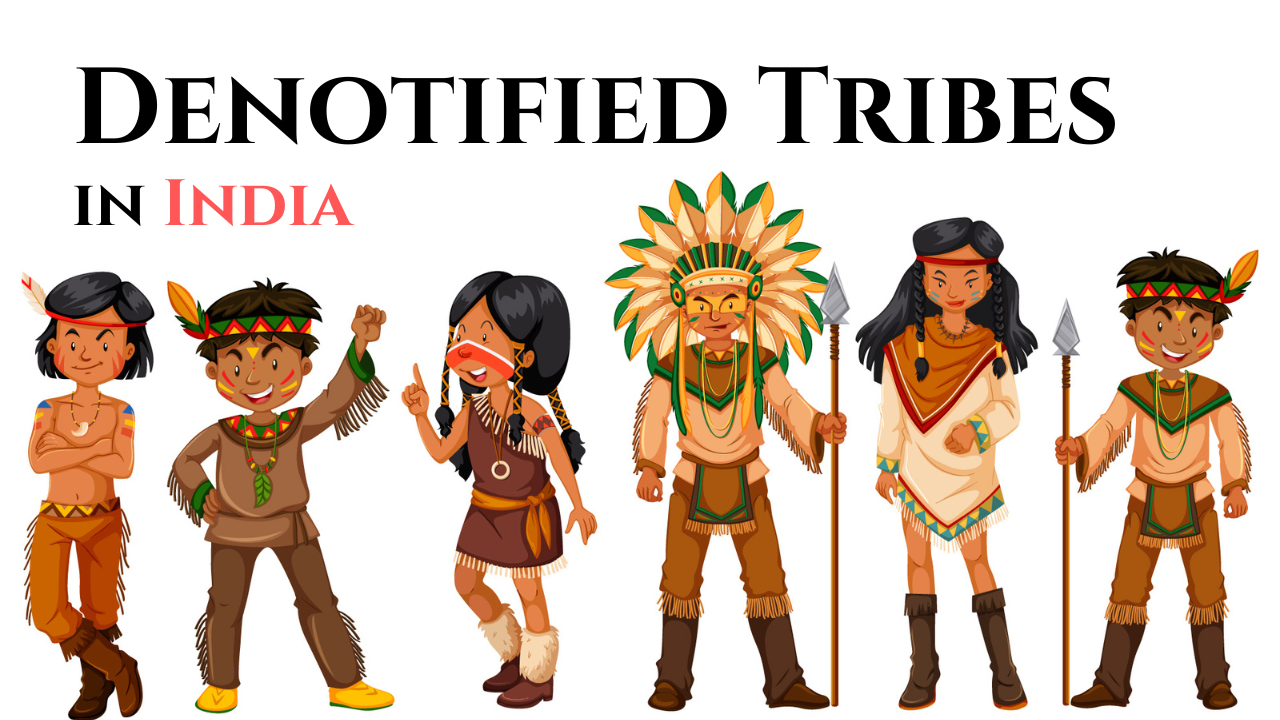Denotified Tribes in India: From Stigma to Recognition
Introduction – Denotified Tribes in India.
India is a land of immense diversity, where various ethnic groups, castes, and tribes have lived for centuries, contributing to its rich cultural fabric. However, not all communities enjoy equal rights and opportunities. Among the most marginalised groups in the country are the Denotified Tribes (DNTs), communities that were once labelled as “criminal” under British colonial rule. This wrongful classification not only stripped them of their dignity but also subjected them to constant police surveillance, social exclusion, and economic deprivation. Despite India gaining independence in 1947 and officially denotifying these tribes in 1952, they have continued to face discrimination, economic hardship, and lack of political representation.
For many decades, commissions and social activists have advocated for their proper classification so they could receive welfare benefits. The recent efforts by AnSI and TRI, after three years of extensive research, have successfully categorised 268 previously unclassified tribes, recommending 179 for inclusion in the Scheduled Castes (SCs), Scheduled Tribes (STs), or Other Backward Classes (OBCs). This essay explores the history, struggles, and contemporary efforts to empower Denotified Tribes, highlighting how classification plays a key role in achieving justice and equal opportunities for them.
Historical Background: The Criminal Tribes Act and Its Consequences
The suffering of Denotified Tribes began with the enactment of the Criminal Tribes Act (CTA) of 1871 by the British colonial administration. This law classified numerous nomadic and semi-nomadic communities as “criminal by birth,” meaning that individuals belonging to these tribes were presumed guilty of crimes simply because of their ancestry. The British justified this law by arguing that the nomadic lifestyle of these communities made them difficult to track and control, and that their traditional ways of living did not fit into the British concept of law and order.
Under this law, entire tribes were forcibly settled in designated areas, placed under strict police surveillance, and required to register their names with the authorities. Their movements were severely restricted, and many were compelled to work in labour camps under harsh conditions. Traditional occupations such as trading, metalwork, hunting, and performing arts—on which many of these tribes depended—were either banned or looked upon with suspicion. Over time, this law not only robbed them of their livelihoods but also turned them into outcasts within Indian society.
After India gained independence, the Criminal Tribes Act was repealed in 1952, and these communities were officially denotified. However, the stigma associated with them did not disappear overnight. The Habitual Offenders Act (1952) replaced the Criminal Tribes Act, which meant that many of these tribes continued to be monitored by law enforcement, keeping the stereotypes of criminality alive. As a result, they continued to face police harassment, wrongful arrests, and social discrimination long after the British had left.
The Challenge of Classification and Recognition
The repeal of the Criminal Tribes Act did not solve the problems faced by Denotified Tribes, as they were left without a clear legal or social identity. Many of them did not fall under the categories of Scheduled Castes (SCs), Scheduled Tribes (STs), or Other Backward Classes (OBCs), which meant they were excluded from government welfare programmes that could have helped improve their socio-economic conditions.
Several government commissions were formed to address this issue, but most of them failed to provide a permanent solution. The First Backward Classes Commission (Kaka Kalelkar, 1955) recommended that DNTs be included in the OBC category, but its suggestions were not implemented effectively. The Lokur Committee (1965) and Mandal Commission (1980) also attempted to classify these communities, but their reports did not result in substantial policy changes. It was only with the Renke Commission (2008) that the full extent of the marginalisation faced by DNTs was officially documented. This report identified over 1,200 Denotified, Nomadic, and Semi-Nomadic Tribes across India and found that 97% of them lived below the poverty line.
Following this, the Idate Commission (2017) further highlighted that 267 DNT communities had never been classified, leading to the latest study by AnSI and TRI. This study has been the most significant effort so far, successfully categorising 268 tribes and recommending that 179 of them be included in SC, ST, or OBC groups, ensuring they receive the benefits that have long been denied to them.
Present-Day Challenges Faced by Denotified Tribes
Despite the progress made in classification, Denotified Tribes still face severe social and economic challenges. The stigma of criminality continues to affect their daily lives, as police harassment and wrongful arrests remain common. In many cases, members of DNT communities are falsely accused of crimes simply because of their background. The Habitual Offenders Act (1952), which replaced the Criminal Tribes Act, continues to give the police broad powers to monitor these groups, reinforcing outdated prejudices.
Another major issue is the lack of education among DNTs. Many children from these communities struggle to complete their schooling due to poverty, social discrimination, and lack of access to quality education. Girls, in particular, face additional challenges such as early marriage and lack of safety in schools. This lack of education has a direct impact on employment opportunities, as many DNTs are forced into low-paying jobs, daily wage labour, or even begging. Traditional occupations such as blacksmithing, metalwork, and performing arts have declined due to modernisation, leaving these communities without alternative means of livelihood.
Another serious challenge is political representation. Unlike SCs and STs, Denotified Tribes do not have separate reservations in politics or education at the national level, making it difficult for them to influence policies that affect their communities. While activists have been demanding a separate constitutional schedule for DNTs, progress on this front has been slow.
Steps Towards Justice and Inclusion
The Indian government has introduced several welfare schemes to improve the lives of DNTs. The Scheme for Economic Empowerment of DNTs (SEED) provides financial aid for education, skill development, and housing. Scholarships such as the Dr. Ambedkar Pre-Matric and Post-Matric Scholarship have helped some children from these communities complete their schooling. Housing schemes like PM Awas Yojana have also provided some relief to landless DNT families. However, many of these initiatives fail to reach all DNTs, primarily because of lack of proper documentation and awareness among these communities.
Efforts are also being made to revive and promote DNT culture and traditions. Some traditional art forms, such as the dance performances of the Nat community and the Kalbelia tribe, have gained national and international recognition. However, much more needs to be done to ensure that these communities are given platforms to showcase their cultural heritage.
Conclusion
The Denotified Tribes of India have endured centuries of discrimination and marginalisation. Even though the Criminal Tribes Act was repealed in 1952, its legacy of stigma continues to affect these communities. The recent classification efforts by AnSI and TRI represent a significant step towards ensuring that DNTs receive justice, recognition, and access to government welfare schemes. However, true equality can only be achieved if education, employment, and legal protections are strengthened further. By acknowledging their history, respecting their cultural identity, and providing them with equal opportunities, India can take a major step towards becoming a more just and inclusive society.
Subscribe to our Youtube Channel for more Valuable Content – TheStudyias
Download the App to Subscribe to our Courses – Thestudyias
The Source’s Authority and Ownership of the Article is Claimed By THE STUDY IAS BY MANIKANT SINGH




